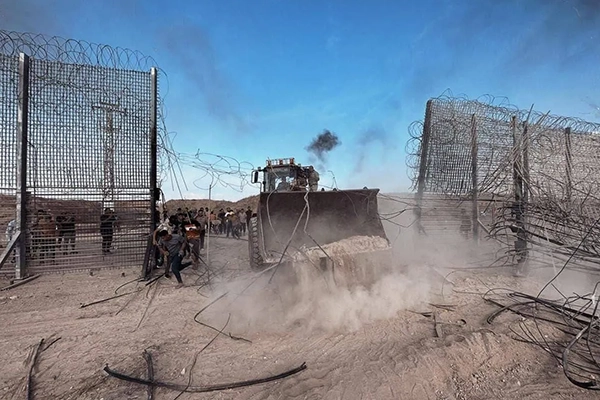7 OCTOBER MASSACRE
The invasion began in the early morning of October 7 with the launch of 2,500 to 5,000 rockets into Israel from the Gaza Strip and the penetration of more than 2,500 armed Hamas terrorists breaching a border security fence and indiscriminately gunning down Israeli civilians and soldiers taken off guard. Other militants stormed beaches in Israel in motorboats and some brought death from the sky, swooping in on paragliders. At least 1,200 Israelis and foreigners were killed and at least 5,132 wounded, more than 240 were taken hostage. The casualties also include approximately 70 dead or missing Arab-Israeli citizens, many of whom are Negev Bedouin and at least 50 migrant workers. The massacre of civilians was marked by extraordinary atrocities. There were multiple cases of sexual violence against women, including minors. Impact of Hamas attacks.
The massacre of civilians was marked by extraordinary atrocities. There were multiple cases of sexual violence against women, including minors.
This attack was the largest mass murder of Jews since the Holocaust
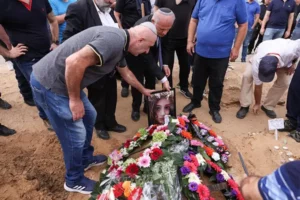
“Air raid sirens began sounding around 6:30 a.m. local time, warning Israeli citizens of the attack in progress and to immediately take cover. Thousands of rockets were fired toward southern and central Israel, including Tel Aviv and Jerusalem, by the Hamas militants. 9-year-old Tamar Turpiashvili went into cardiac arrest during an alarm. She couldn’t cope with the moments of fear and anxiety that caused her little heart to lose control. The girl collapsed and died. Avi, Tamar’s father said at the funeral: «Mom and I feel like a wreck on one side and awake to the fact that our pain will never let up. We hereby swear to store our strength in order for you to live in our hearts whenever and wherever we are. We love you. … You were our little angel that God gave us for nine years.”“
At the same time, the first public statement was made by Muhammad Deif, the leader of the military wing of Hamas. He announced the start of “Operation Al-Aqsa Flood” and said that “the enemy will understand that the time of their rampage without responsibility is over,” calling on the Palestinians to attack Israeli settlements with any weapons they have.
The massacre of civilians and fighting with terrorists continued for many hours. It took the Israel Defense Forces several days to regain full control of the territories adjacent to the Gaza Strip.
Below is a description of the events in all towns, kibbutzim, and villages that were attacked by Hamas militants.
The Supernova Music Festival massacre
The Supernova Music Festival near the Re’im kibbutz was attacked by Hamas militants, some of whom arrive via motorized paragliders. Of the approximately 3,000 to 5,000 people at the festival, at least 260 were killed and many others abducted.
One attendee stated that after cutting the electricity, a group of approximately 50 Hamas gunmen arrived in vans and sprayed gunfire in all directions.
As festival attendees fled in panic, jeeps filled with gunmen began firing at the escaping cars. Gunmen also blockaded roads. The open terrain left few places to hide. Many attendees who hid in the trees were murdered as militants methodically shot them. Others who hid in bushes and orchards managed to survive. The massacre took place amid a rocket siren, signaling a barrage of rockets fired into Israel.
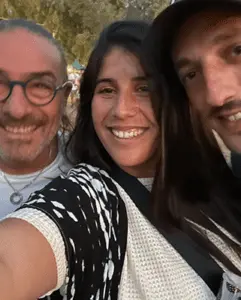
The terrorists threw in two grenades and a smoke bomb. I couldn’t breathe.
Maor yelled “They’re killing us!” He was hovered over me and I was holding on to him for dear life.
A terrorist walked in and fired what sounded like a million bullets.
One hit my leg and I whispered to Maor “I’m shot.” He said, ” I got you, you’re ok.” A few minutes went by, and it was quiet. The terrorists had left our shelter.
I called out, “Dad, Dad, they shot me,” and when he didn’t respond, I knew that they had murdered him.
The Hamas militants kidnapped an unknown number of participants; videos on social media showed them being seized. The abductedconcertgoers were taken to Gaza, where some were filmed in Hamas propaganda videos.
Witnesses have reported that some of the captured women have been raped.
Photographs from the aftermath of the attack show dozens of bodies at the festival grounds, including a badly burned body bound by cable ties.
The massacre at the Supernova festival was the largest terror attack in Israel’s history, and the worst Israeli civilian massacre ever.
Hamas denied that the attack was against civilians and said that it viewed the victims as “soldiers”. Later Hamas changed their stance claiming that forces under Hamas never targeted civilians but the massacre was carried out by independent groups of Gazan civilians after Hamas had defeated the Israeli forces in the region. Later still Hamas denied that any massacre had taken place at the festival.
The slaughter of people in Re’im occurred concurrently with a series of other massacres and military engagements in multiple neighbouring Israeli communities.
Be’eri massacre
Around 70 Hamas militants carried out a massacre at Be’eri, an Israeli kibbutz near the Gaza Strip.
Around 70 militants entered the kibbutz on motorcycles and in vehicles, and killed the security personnel at the entrance. After capturing the village, Hamas attackers went around the neighborhoods, shooting and throwing grenades, massacring the occupants of each house and setting some on fire with Molotov cocktails.
At least 130 people were killed, including women, children, and infants, claiming the lives of 10% of the farming community’s residents. Dozens of homes were also burned down.
The militants were accompanied by a camera team and journalist who documented the attack and extolled it as a Palestinian victory. Many residents tried to hide in safe rooms, but the militants blew up the safe room doors and killed those inside.
WhatsApp was used to advise occupants and share safehouses, but it also turned increasingly desperate as mentions of deaths of babies and family members surfaced.
The terrorists took up to 50 people hostage in a dining room in Be’eri, and kidnapped others, taking them to the Gaza Strip. When Israeli security forces counter-attacked, the militants holding the hostages were forced into a stand-off. Videos emerged showing the hostages being led barefoot across a street in town.
Two hours after the massacre began, twenty Israeli Air Force airmen from the elite Shaldag Unit arrived by helicopter at Kibbutz Be’eri. Five were killed and one was wounded by the militants within a very short time. The surviving airmen were forced to retreat and find other civilian areas with less resistance due to their now very small group. An Israeli helicopter was destroyed on the ground by Hamas militants hours after the attack at Be’eri kibbutz.
After around 12 hours, more IDF forces arrived and killed most of the militants. Some 18 hours after the stand-off began, the IDF reported the hostages had been freed. However, security forces continued to sweep the village for Hamas holdouts.
The kibbutz suffered heavy losses of life and property, leaving it devastated and shattered.
Yossi Landau, regional head of the relief organisation ZAKA, stated to Sky News that around 80% of the bodies at Be’eri and Kfar Aza showed signs of torture, and that he found “two piles of ten children each were tied to the back, burnt to death” at Be’eri.
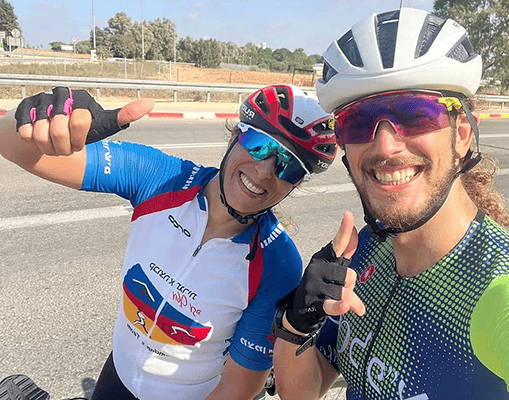
“Then we heard the terrorists on the road. They rode motorcycles, cars, and tractors with plows. Helicopters were in the sky. Shots, red alert [rocket] sirens sounded throughout the area, strong blast waves from something that had exploded next to us. In retrospect, I believe it was a grenade that had been thrown into the bomb shelter that I had been standing in just a few moments ago. They had killed the people there, and there was the smell of fire. All types of rockets and bullets flew by and above us and I knew we could not get up.“
Kfar Aza massacre
About 70 Hamas gunmen broke through a fence and gained access to the kibbutz on the morning. After entering the kibbutz, which was 3 kilometers from Gaza, the militants proceeded to massacre residents of the community. The Islamist militants began by targeting the west side of the community—an area in the kibbutz close to Gaza – where families with young children lived. Fifty two people at the kibbutz are known to have been killed.
The attack is notable for claims of brutality in the form of beheadings, dismemberment, and victims having been burned alive. Forensic investigators said that they had seen evidence of decapitated people, including babies, but stated that it was unclear whether the decapitations happened before or after death, and that the decapitations could have resulted from the use of rocket propelled grenades, rather than as a result of intentional cutting with a blade.
In one house, said Simcha Dizengoff, a first responder with the Zaka emergency response service, who arrived at the scene on 11 October after the Israel Defence Forces finally regained control of the village, a birthday cake still sat on the table from the weekend. Following the unmistakable smell of burned flesh, his team found the bodies of two adults, two children and their grandmother in the safe room, hugging each other on the floor in the corner. The family were now reminiscent of the dead of Pompeii, he said; it was impossible to separate their corpses into body bags.
In another Kfar Aza house, a woman, naked from the waist down, had been bent over a bed and then shot in the back of the head. When the team tried to move her, a live grenade rolled out of her clenched hand.
Members of the kibbutz with military training, who formed a volunteer armed guard, fought against invading militants in an attempt to defend the community. All were killed. Hamas militants broadened the attack to all four directions. Invading militants burned houses and killed civilian residents. Corpses of those who had lived in the community were found with their hands tied. The militants took women, children and senior citizens among the hostages back to Gaza.
The kids were heroes the entire time. They laid quietly on the floor for hours as they heard us begging for help from the police, from the army, from the firefighters, and from all those that we had put our faith in.
We heard the terrorists shouting from every direction, looting everything they could, and we waited for hours.
From 6:30am until the afternoon, the situation only deteriorated and no one came.
There was no army nearby, only terrorists.
It took the Israel Defense Forces two and a half days to regain full control of the community after the initial attack.
Nir Oz massacre
In the Nir Oz kibbutz Palestinian militants murdered scores of its residents, burned homes, and abducted civilians. Per The New York Times, 180 of the roughly 400 residents were killed or abducted as hostages. The Jerusalem Post also estimated 80 abductions in Nir Oz. An account by a veteran war correspondent reported that “around a quarter of the people of Nir Oz were assassinated, kidnapped, or injured in a very severe way. Those who survived have no place to come back to.
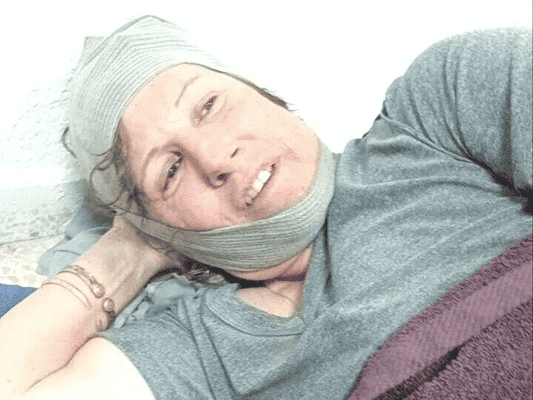
“We were 50 meters into the fields when I was hit with shrapnel in my head, knee and back. I was bleeding. I lay down on the ground and a tractor showed up. It was my tractor, the one I work with. There were terrorists on it. They saw us and started coming toward us to put us on the tractor and take us with them. I said to myself that it was now or never; I decided to play dead — and they didn’t take me. They ignored me. They took the three little girls, the parents of the twin girl, everyone who was there and still alive. They took them all to Gaza.“
Sderot
Hamas gunmen attacked the town of Sderot (population 30,500), engaging in firefights with Israeli police and civilians in the streets and occupying the town’s police station. About 18 members of the Israeli police were killed during the fighting.
The terrorists butchered dozens of senior citizens at a bus stop. The victims were wearing their best clothes as they waited to board a bus to the Dead Sea, where they were going on an organized trip. The bus stop became a horrific killing ground. Those who waited in it for shade died on the spot, some falling atop their slain companions, their blood pooling together. Whoever tried to escape was hunted down on the street and in the pathways that separate the area’s many projects.
Fighting continued through the night until security forces retook the police station, which was demolished in case more terrorists remained inside. Early estimates stated that at least 20 civilians were killed as they were waiting at bus stops, walking down the street, and driving in their cars. Of the 36,000 residents of the city, 90% were evacuated during the days after the massacre.
“The roads are full of bodies, blood, and perforated cars”. I yell, “Now!”. We pack pretty much nothing, a suitcase full of nothing, put the kids in the car, and brief them – except for breathing, you’re pretty much not allowed to do anything.
Ofakim
The town of Ofakim (population 32,000) witnessed severe violence, resulting in the death of at least 50 residents. Reports suggest several civilians were also abducted to the Gaza Strip.
The IDF now believes that the Hamas fighters were trying to seize Ofakim’s police station, as they did in Sderot, but were derailed by armed residents and off-duty police. Instead, about 10 of them turned the nearby quiet residential Ha-Tamar Street into a battleground, going from house to house to kill and capture.
The story of Rachel and her cookies
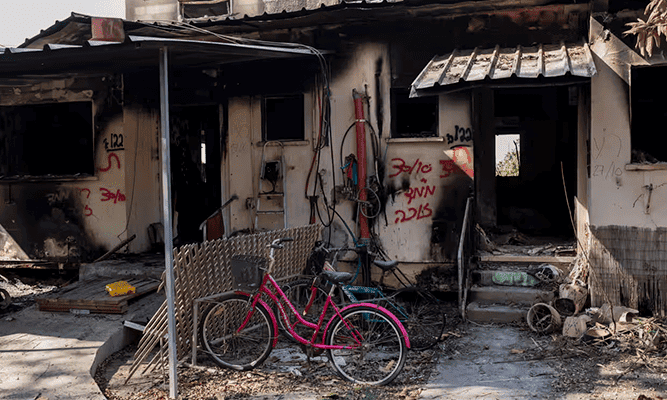
“The story of Rachel from Ofakim has spread all over the world. In an orange house halfway up Ha-Tamar, five men forced entry through the the back door at the home of Rachel and David Adri, a couple in their 60s, seizing their phones and smashing windows to use as sniping positions. Earlier that morning Rachel had called her son, a policeman, to say she had heard shots in the area. After Hamas arrived, Rachel, who speaks some Arabic, engaged them in small talk for the next 20 hours, making food and even bandaging one captor’s hand, stalling for time until help arrived.
At about 2 a.m., after 17 hours of being held hostage, the police stormed the house and freed David and Rachel. It succeeded because Rachel’s son drew a detailed diagram of his parents’ house. Police officers managed to catch the terrorists by surprise, surround and destroy them.“
Netiv HaAsara
The Netiv HaAsara settlement Hamas near northern Gaza Strip was infiltrated by terrorists, who came on paragliders. They went from house to house, killing more than 20 people and injuring many more. Some victims were from the same family, while others were members of the village’s rapid response team. At some point electricity in the village went out, leaving people trapped in safe rooms without power.
That’s it, from that moment on, I was in a live horror movie.
I had a panic attack, for the first time in my life.
I lost control over my body, I was shaking like crazy, I couldn’t breathe, and in my head
I was thinking that I’m probably going to die today. What about everything I planned?
What about all the people that I love? What about my family? How is it all ending like this?
We were powerless, just waiting for the terrorists to get to us, without any way to defend ourselves.
We grabbed knives, knowing they wouldn’t help. The terrorists had poison in their eyes and weapons,
and we were terrified and armed with knives.
Holit
Residents of the kibbutz say the attack on Holit started at around 8AM. Hamas militants moved from house to house, killing at least 11 civilians and injuring many more.
We heard noises of heavy tools outside our house. The IDF is here I thought. But that wasn’t the case. It was the animals that took over the vehicles and destroyed every beautiful corner of our house. Part of the time, the children were on the floor, under the bed, scared and cold. For hours they didn’t utter a word. Not asking for water and food. Immediately understanding their role, to be quiet and hide.
Re’im
Kibbutz Re’im, near which the infamous Supernova music festival was held, was also attacked by a group of Hamas fighters. Dozens of assailants attacked the kibbutz, which in the early hours of the assault was defended just by a six-member alert squad. Five of the kibbutz residents were killed and five abducted.
This whole time when my friend and I were fighting side by side, I felt that we were defending our very own home; everything that our home symbolizes to us – because the Kibbutz itself is a home. We were fighting for the place where our children were raised, including the petting zoo, the football field, our educational institutions, and our cultural heritage. It was a war for our home in the broadest sense but also for the smallest things.
Sufa
Early recognition by Elia Lilintal allowed for the mobilization of a defense squad, saving numerous lives. The defenders fought for hours before the arrival of IDF forces.However, the attack still led to three kibbutz members losing their lives.
Zikim
A group of terrorists reached the outskirts of the kibbutz and launched an RPG, attempting to enter the kibbutz. The alert squad opened fire and managed to disrupt their plan. They threw grenades and explosives into the kibbutz, but were repelled. Two alert squad members were injured.
Kerem Shalom
A prolonged six-hour defense against terrorists resulted in the loss of two members of the alert squad. 20 terrorists were killed.
Nir Yitzhak
The alert squad tried to repel the attackers, but faced abductions and several casualties.

“I later learned that it took the army three rounds to regain control of the Kibbutz. To my understanding, there were 30 terrorists roaming the Kibbutz, some were apparently kids on bicycles or motorcycles, attempting to steal or vandalize anything they could find in our homes.“
Magen
Terrorists made it to the kibbutz fence and blew it up, but the alert squad prevented them from entering the kibbutz. Other multiple attempts by Hamas to breach the kibbutz were largely unsuccessful, although one kibbutz member was killed.
Erez
Members of the alert squad spotted the terrorists advancing, spread themselves out over the kibbutz and battled them for several hours. One defender was killed.
Miflasim
In a prolonged confrontation, about 200 terrorists were killed, with the rest retreating to the Gaza Strip.
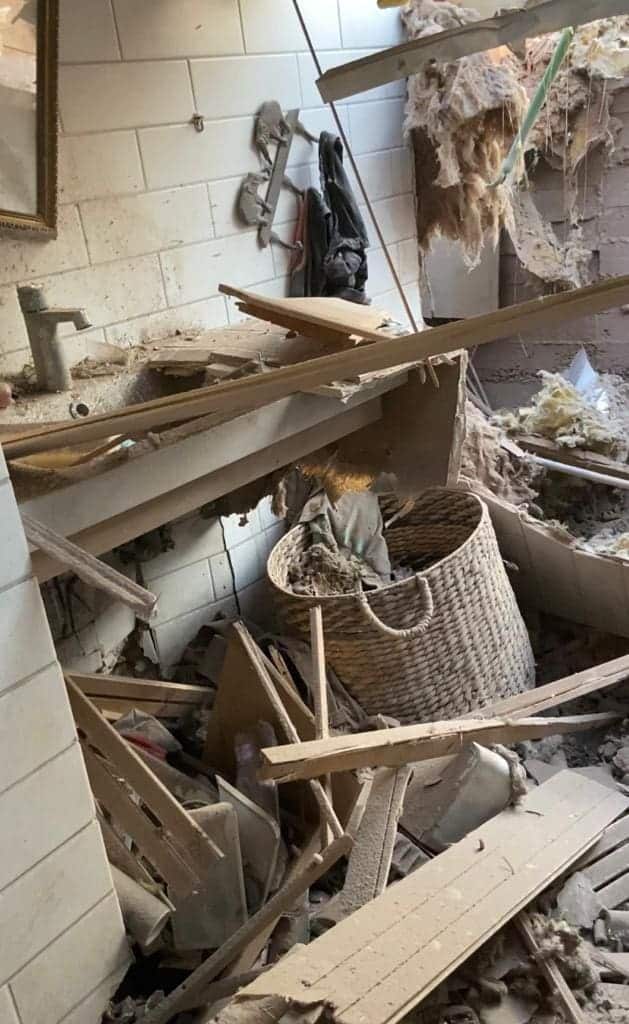
Saturday morning, October 7, 2023, will forever be etched in the history of Kibbutz Mefalsim as the most challenging morning the Kibbutz has ever faced. However, it was also a morning marked by courage, heroism, and miracles.
Mivtachim
Despite being outnumbered, the alert squad defended their settlement, though at the cost of several lives.
“The military security coordinator, Dan Assouline, left his house with the alert squad to defend the community. He battled terrorists and fell along with his friend, Tal Maman. Sagiv Be’eri, who fought alongside them, tells us: “Eight terrorists, armed from head to toe, were shooting at us, together with snipers on the rooftops. Dan and Tal fought like heroes. Special forces only showed up at the moshav at 2 p.m.”“
Nahal Oz
A surprise attack led to mass casualties and abductions.
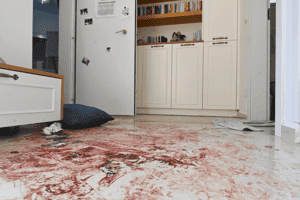
“Glancing outside the door we saw five bodies of terrorists on the ground, one of them carrying an RPG launcher. Death was closer than we realized, even in the most difficult moments. But in the evening, when we prepared dinner for 12 children with one of the neighbors, we hadn’t come to terms with everything yet. The understanding arrived only later, in the middle of the night, on a bus that evacuated the residents of the kibbutz far from the border.“
Granddad to the rescue
Ein HaShlosha
Terrorists committed a massacre, although their efforts were partially resisted by the kibbutz’s alert squad. The 15-strong alert squad battled with the assailants for six hours before the IDF arrived.
Statistics about the extent of the bloodshed are largely unknown, although four civilian kibbutz members were killed by the Hamas militants while defending the kibbutz. An 80-year-old Argentinian woman perished after her home was set on fire and she was unable to escape. The leader of the security team, who was in his sixties, was killed in the firefight. A 63-year-old grandmother was also among those killed in the attack.
Among those murdered is Marcelle Talia, who had come to Ein Hashlosha to visit her daughter, Liora Ben Zur, who had given birth to a daughter two days before the massacre. “I called my brothers. They showed up at the kibbutz on their own with guns and saved my family,” she recalls.
Thirty survivors were discovered in the kibbutz three days after the massacre, fourteen of whom were Thai nationals.
Yakhini
A raid by dozens of terrorists resulted in at least seven deaths.
Nir Am
A lengthy battle ensued after 35 terrorists attacked Kibbutz Nir. Reinforcements eventually arrived, leading to the elimination of the terrorists.
Kfar Maimon
The Hamas militants brought down a Yasur helicopter 300 meters from the village’s fence. On board there was a company of paratroopers who were on their way to help in another location. Luckily nothing happened to the pilots and the fighters. They landed in the fields straight into the battle, facing dozens of terrorists and killing them.
Alumim
A team of terrorists infiltrated the kibbutz and killed close to 20 Thai and Nepalese workers. The alert squad and volunteers fought the terrorists for six hours.
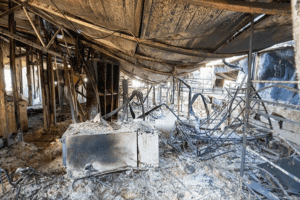
“The commander of the prison service’s Metzada unit that rushed to the site recalls the battle. “We spotted the Hamas van at the back entrance to Alumim, with large quantities of RPGs, explosives and ammunition and we realized that these were strong teams rather than a lone terrorist with a Kalashnikov. On our way to the gate, we were met with heavy gunfire and my fighters managed to kill several terrorists. Our platoon commander was shot in the arm and carried on fighting for an hour. We saw a number of bodies and we killed a lot of terrorists, but the degree and scope of cruelty we met in the field was something quite new.” “
Kisufim
A devastating attack led to the death of several kibbutz members and foreign workers.
Pri Gan
The local alert squad was largely away, so the terrorists managed to breach the settlement, leading to several casualties. The alert squad from Shlomit rushed to Pri Gan where, in the house adjacent to the back gate, they fought terrorists for an hour. The fighting prevented a massacre in the settlement. Two Shlomit residents, Aviad Cohen and Reuven Shishportish, were killed and four were lightly and moderately wounded.
Yad Mordechai
The settlement’s defenses successfully repelled an attempted infiltration, preventing any terrorist from entering.
Gevim
Terrorists got as far as the fence of the kibbutz adjacent to Sderot. The military security coordinator and a member of the alert squad repelled them in a gun battle. They were injured and evacuated after several, long hours.
The materials were taken from:
HELP US SUPPLEMENT THE MATERIAL WITH FACTS
Chronology of the events on the 7 of October
06:30
Air raid sirens were activated in southern and central Israel in response to Hamas missiles.
07:00
The Supernova Music Festival near the Re’im kibbutz was attacked by Hamas militants.
07:40
The Israel Defense Forces confirmed that Hamas militants had entered southern Israel and asked residents of Sderot and other cities to remain indoors.
08:23
Israel declared a state of alert for war, activating its reservists, in response to continued rocket attacks.
08:34
Israel announced that it had begun counteroffensive operations against Hamas.
10:47
The Israeli Air Force began attacking Gaza.
11:35
Prime Minister Benjamin Netanyahu made his first statement about the conflict via Twitter, declaring that Israel is at war.
12:21
The Israel Defense Forces began operations to relieve cities in southern Israel as the number of rockets launched from Gaza increased to over 1,200.
12:29
The United States made its first statement, through the National Security Council, which condemned the terrorist attack and reaffirmed U.S. support for Israel.
16:08
President Joe Biden spoke with Netanyahu and expressed his condolences and support, later declaring during a speech that U.S. support for Israel was “…solid and unwavering”.

